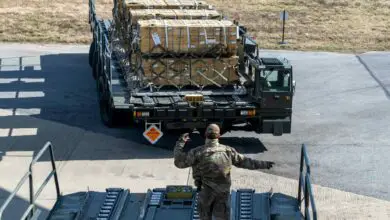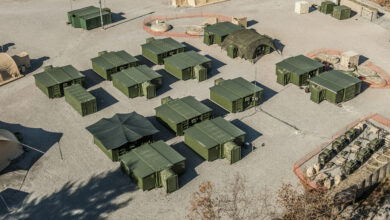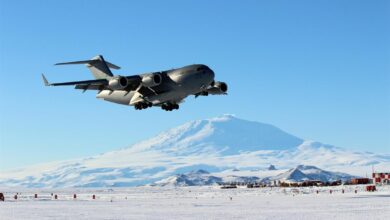US Army Researchers Working on Adding Muscle to Robots
The tissue will be grown in the laboratory and fused with the robot’s muscle joints in place of traditional actuators.
To add dynamism and agility to their robotic systems, US Army researchers are working on a project that envisages adding muscle tissue to the unmanned platforms.
The tissue will be grown in the laboratory and fused with the robot’s muscle joints in place of traditional actuators, the US Army said in a statement. Actuators are components responsible for moving and controlling mechanisms.
“Though impressive in their own right, today’s robots are deployed to serve a limited purpose then are retrieved some minutes later,” said Dr. Dean Culver, a research scientist at Army Research Laboratory (ARL), in the statement.
“ARL wants robots to be versatile teammates capable of going anywhere Soldiers can and more, adapting to the needs of any given situation.”
In the first phase of the bio-hybrid robotics project, army researchers, in collaboration with researchers from Duke University and the University of North Carolina, are focusing on the army’s legged robotic platforms and flapping-wing drones.
Fusion of Biological Components and Mechanical Devices
Like the sci-fi concept of the cyborg (cybernetic organism), bio-hybrid robotics also includes a fusion of organic tissue and mechanical devices.
While in the case of the cyborg, the approach is to improve or restore the capacities of organic beings with the help of inorganic devices, in the case of bio-hybrid robotics, living organisms or organic parts are integrated into mechanical systems to improve the latter’s performance.
“Organisms outperform engineered robots in so many ways. Why not use biological components to achieve those remarkable capabilities?” Culver asked rhetorically. The team’s proposal involves the behavior of the proteins that drive muscle performance, he said.
Researchers Will Work on Legged and Winged Robots First
On initially picking the legged and winged platforms to work on the project, Culver explained the types of hindrances these types of robots face while moving on unstable terrain or flying in congested airspace. He also described how organic tissues can improve system performance.

“Muscle actuation, though certainly not solely responsible for it, is a big contributor to animals’ ability to navigate uneven and unreliable terrain,” he said, adding, “Similarly, flapping wings and flying organisms’ ability to reconfigure their envelope gives them the ability to dart here and there even among branches.”
“In multi-domain operations, this kind of agility and versatility means otherwise inaccessible areas are now viable, and those options can be critical to the US military’s success.”
Tissue-Enhance Robotics Offer Enhanced Agility
The project will be divided among collaborators, with researchers from Duke working on the computational research component while those from the University of North Carolina will manage experiments validating the predictions made from the research.
US Army researchers, meanwhile, will work on the theoretical mesomechanics (the theory that describes the stages of deformation) that can be tested with data collected from both the computational and experimental efforts.
Finally, the entire work will be supplemented by a separate Duke University team, which is working to implement the performance characteristics of muscle, tendon, and ligaments of jumping creatures like Kangaroo in the legged robots.











